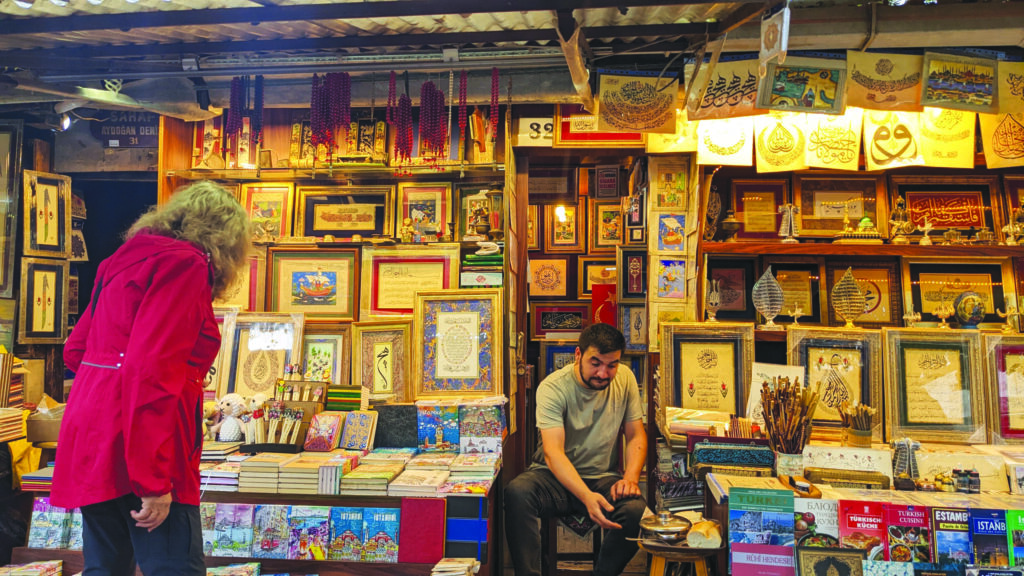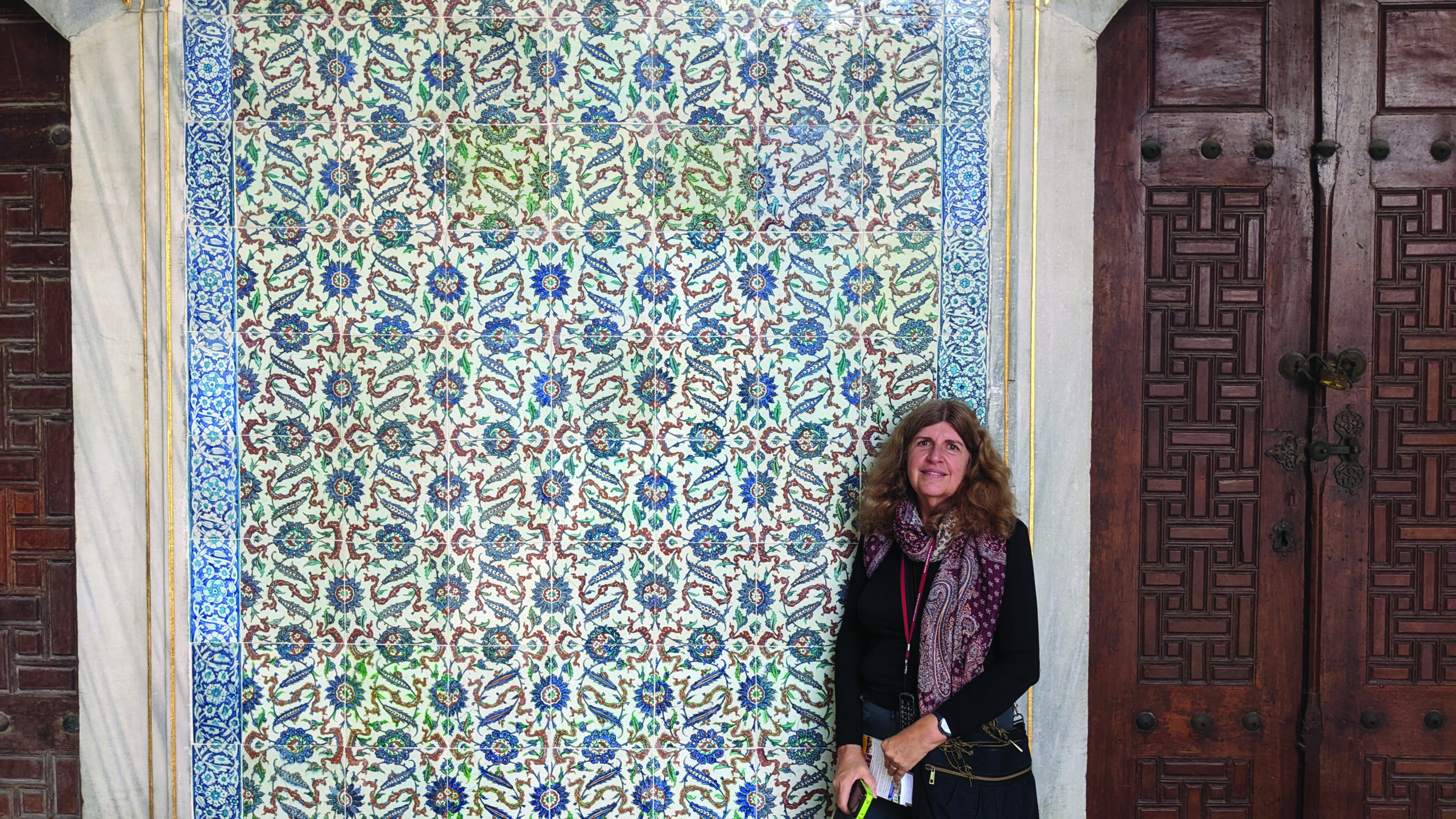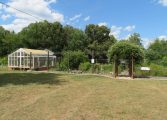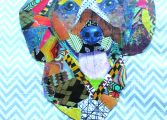By Page H. Gifford
Correspondent
Every year Al and Sue Mink travel overseas to exotic locales to “nest” for three months and soak up the local culture of the places they visit. They have been to many places in Europe and Asia and this time spent three months in Istanbul, Turkey. It’s not a place that the average traveler puts at the top of their travel adventure list but one that if you are an avid traveler is a definite destination.

“Istanbul is a city like no other in the world. It’s huge. It’s busy and vibrant. It is a melding of cultures, unlike any other place we’ve been. We loved the incredible span of things to see,” said Sue Mink. “There’s more here than you could process in three years, never mind three months. Some of the greatest sights in the world are here, and it’s incredibly exciting to experience them. There are lots of pinch me moments.”
Istanbul is the only city in the world that sits on two continents – Europe and Asia. Mink and her husband Al lived on the European side, across the Golden Horn in an area called Cihangir, known as the “Soho of Istanbul” and features great restaurants and interesting little shops.
“Istanbul is a meeting place of cultures. You can see women in full burkas walking next to girls in midriff tops and short shorts,” said Mink. She explains that it is the terminus of the Silk Road, the trading route that ran from China. “That’s why there’s the huge Grand Bazaar where you can shop for nearly anything you can think of.”

In America, we call them malls but in Asia and Europe, they are a cluster of shops or kiosks. She described the main, covered part catering to tourists but all around it are little areas that specialize in anything you can imagine. Just to get an idea of the variety, there are large areas selling everything from scarves, towels, toys, children’s dresses, camo gear, men’s underwear, wooden kitchen items, and just belt buckles. “It’s easy to get lost in there, but also lots of fun,” she said.


Turkey is situated in an area that is surrounded by clashing cultures and volatile tribalism between Russia and the Middle-East. Mink noted its rich and fascinating history beginning in 1453, when Mehmet the Conqueror defeated the armies of the Eastern Roman Empire and took over the city, changing the name from Constantinople to Istanbul. It was a turning point in world history. This explains the Roman influence in Istanbul, which has traces of Roman architecture and culture which is blended in with the Ottomans’ style.
“The great Hagia Sophia, at one time the largest Christian church in the world, was changed into a mosque. The skyline is covered in minarets and you can hear the call to prayer five times a day,” she said. She added that you can explore the cisterns, which held the city’s water underground, and is full of ancient Roman columns. Wherever the Minks go they manage to find these hidden ancient relics of history.
“The Ottoman Empire’s palace, Topkapi, is huge and takes nearly a day to explore. You can visit the gardens, the kitchens, and the harem area where the wives and concubines of the Sultan lived.” Near their apartment was the Dolmabache Palace which was built in 1856 and is much more European in flavor. The sultans wanted a palace more in style with the times and moved there. It was the center of the government until the fall of the Ottoman Empire in 1922.
“One of my favorite places to walk was the Galata Bridge. It’s a two-level bridge with cars and a walking path on the top level, and it’s nearly always lined with fishermen. The lower level is full of seafood restaurants, and while it’s overpriced, it’s a lot of fun to watch the boats and ferries go by while eating your lunch,” she said. “It’s a great view, but Istanbul is full of great views. It’s very hilly, so there are some beautiful vistas, and the architecture is very striking. It’s got some of the nicest rooftop restaurants I’ve ever seen.”
She said the food is amazing but because it’s a Muslim country, there isn’t any pork available.
“Pork and beef in Europe usually aren’t as good as our beef here in the States, but the lamb and the fish are amazing and the produce was wonderful. The best meal of the day was breakfast, namely Kahvalti. There are Kahvalti restaurants all over, which are open as late as midnight, and all they serve is Turkish breakfast.” she said. “It consists of different breads with jams and spreads, vegetables, cheese, often a beef sausage, and an egg dish. Usually, the eggs were menemen, which is eggs scrambled in chopped tomatoes with spices, onions, and green peppers.” She said her favorite breakfast food (which wasn’t just for breakfast) was gozleme, which is a very thin flatbread, stuffed with cheese, and sometimes spinach or potatoes. “You could find gozleme for sale on the streets, right next to the grilled corn on the cob, mussels, or roasted chestnuts.”
She said the European side of Istanbul has a very different character than the Asian side.
“The people there will tell you the Asian side is a better place to live if you’re making a home there long-term. It’s less busy and more relaxed and the tourists rarely get over there. I liked Kadikoy on the Asian side – it had a large produce market and lots of great little shops and restaurants. Getting to the Asian side was very easy – the ferries ran continuously, were cheap, and convenient. At first, it was a little intimidating to think about going to a different continent, but by the time we left, it was no big deal at all to go to Asia for dinner.”
One of the highlights of their trip was going to a Dervish school during a cultural festival and seeing the whirling dervishes.
“There are lots of tourist shows with dervishes, but we saw the real thing with the authentic ceremony. Dervishes are Sufi monks who worship in a unique ceremony in which they enter a sort of trance and spin around to show their connection to both heaven and earth. As they twirl, they hold their arms in the air, but one hand points up to the heavens and the other down to the earth. Every moment, sound, and piece of clothing has special symbology. I found it fascinating and also quite moving.”
Another memorable aspect of Istanbul is its famous cats. There are over one million cats in the city.
“While we might call them strays, in reality they are more like communal, community pets. People put out food and water for them, put little cat homes out for them to live in, and even pool their money for the cats in their neighborhoods to be vaccinated. They are fat, happy, and very friendly. Nearly every time you sit down somewhere you’ll be visited by a cat wanting to be pet.”
During their three-month stretch, they learned about the Turkish economy.
“Turkey is dealing with crushing inflation. While the U.S. Labor Department published an inflation rate of 7.1 percent for the U.S. this past year, Turkey’s inflation was 85.5 percent for 2022. We saw prices rising all around us daily while we were there, but luckily, the dollar rose against the lira, too, so we weren’t as affected.” The price of a liter of milk nearly doubled in the three months they were there. “It is very difficult for the Turks because salaries haven’t risen so much and companies have contracts they have to fill at rates they negotiated before prices rose so quickly. Many people are struggling.” She added that there are always long lines at the ATMs because they try to keep their money in foreign currencies and only take it out in cash in liras when they are going to spend it immediately.
As for the people, she said they were deeply touched by their generosity.
“Al is a member of Rotary, and when we contacted the Rotary Clubs in Istanbul they welcomed us with open arms, even giving us special dinners and tours. We were amazed at how welcome they made us feel.”



